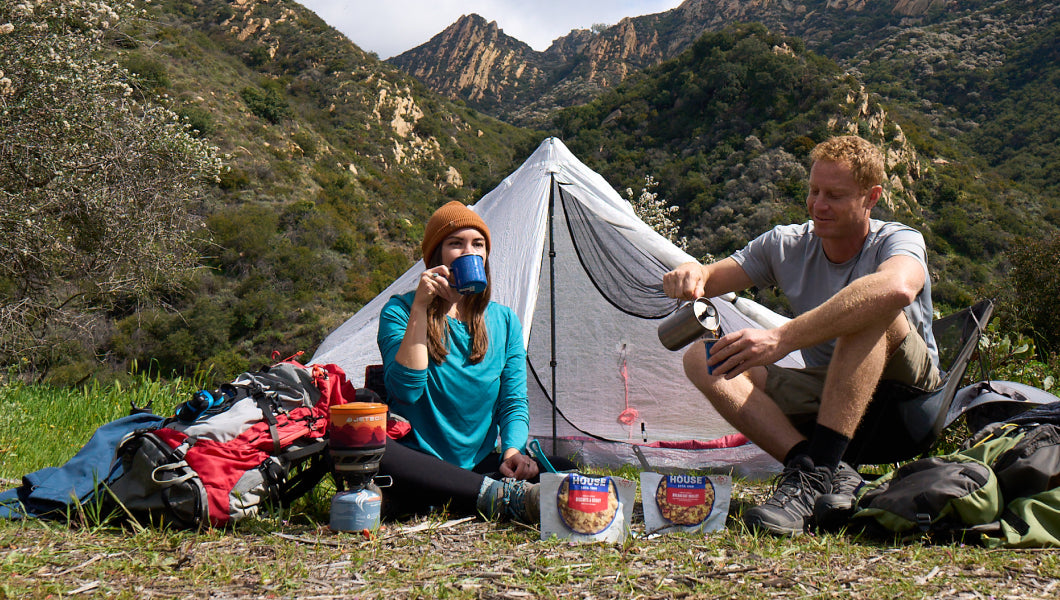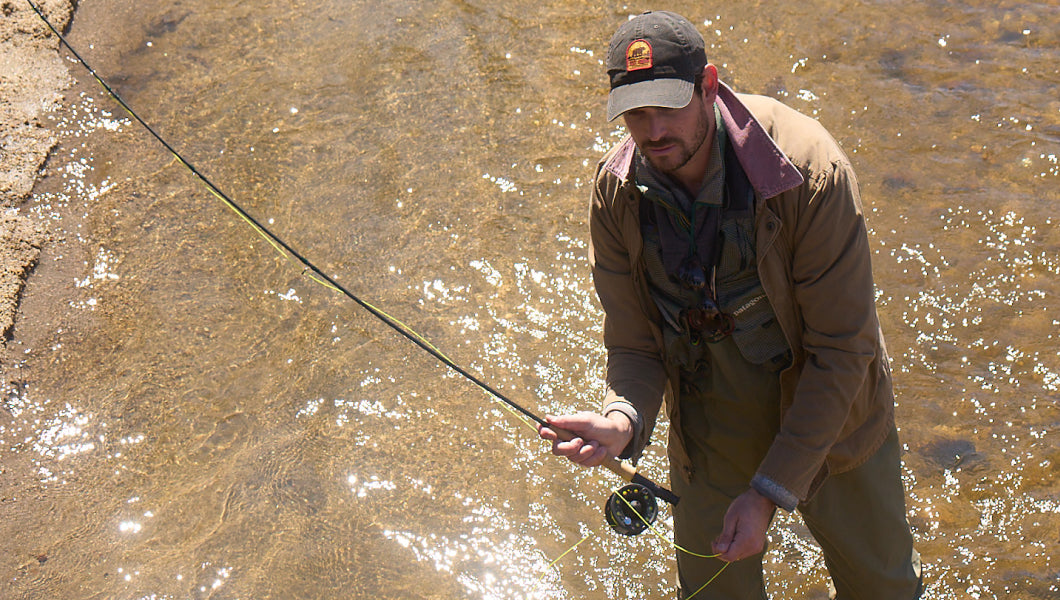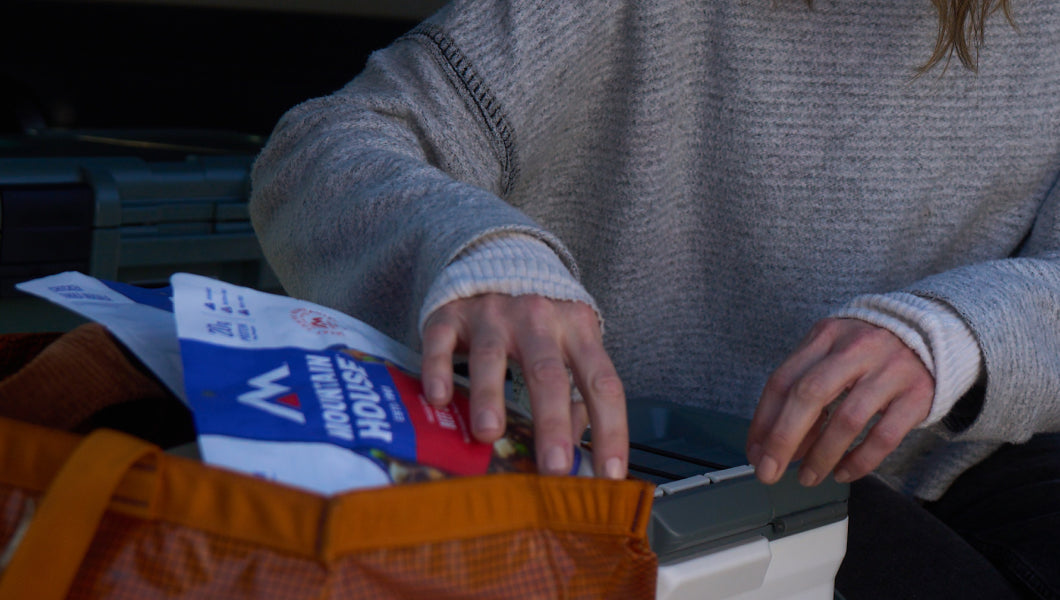Inspired for an Adventure? Check out Beef Stroganoff - Pouch and Beef Stew - Pouch
Free Ground Shipping On All Orders
Over 2,100 Reviews
Add description, images, menus and links to your mega menu
A column with no settings can be used as a spacer
Link to your collections, sales and even external links
Add up to five columns
Add description, images, menus and links to your mega menu
A column with no settings can be used as a spacer
Link to your collections, sales and even external links
Add up to five columns
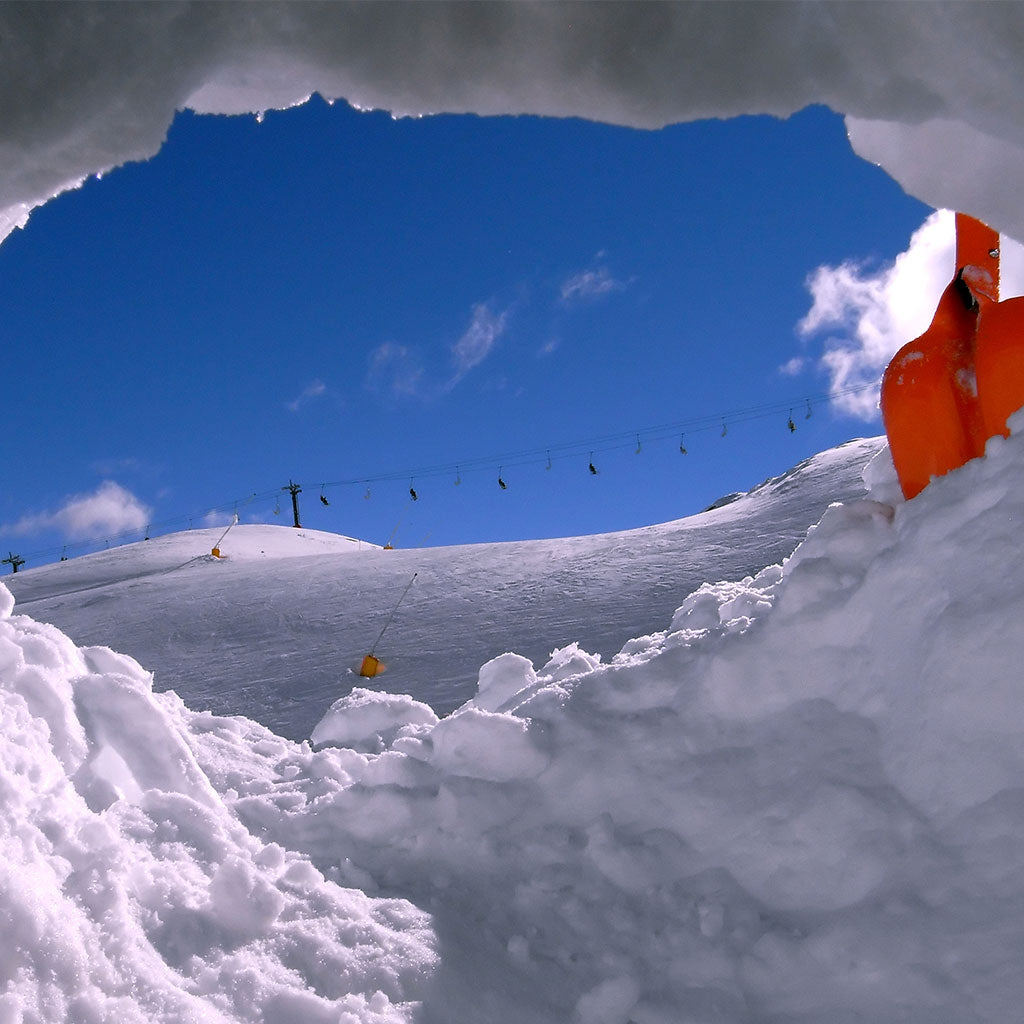
Avalanche Safety
For winter outdoor recreationists in the mountains, there’s no more fearsomely violent natural hazard than the avalanche. Too many of those skiers, snowshoers, climbers, and snowmobilers underestimate the risk and/or lack basic knowledge of avalanche behavior and avalanche safety. Others at least recognize the threat avalanches pose but don’t always actually take the time to study the forecast, test the snowpack, or practice their rescue techniques.
There’s no substitute for taking an avalanche-safety course, which we heartily recommend to anyone who regularly adventures out in the winter backcountry, but for starters check out this blogpost: serving up a walk-through of some of the fundamentals of avalanche science and avalanche safety tips. As prime snow-slide season gets underway, now’s the time to bone up on Avalanche 101!
Avalanche Safety: The Risk
Each year avalanches on average kill close to 30 people in the United States, according to the Colorado Avalanche Information Center. Backcountry skiers, snowboarders, and snowshoers as well as mountain climbers are among the most vulnerable groups, but it may come as a surprise that in recent years snowmobilers have accounted for the greatest number of avalanche fatalities.
Avalanches can occur throughout the year depending on the location, but certainly winter and spring are the most active seasons. Springtime tends to be the most all-around hazardous due to the combination of weather and snow conditions and the number of outdoor recreationists—including shoulder-season hikers—in the mountains.
Introducing the Avalanche
An avalanche occurs when heavy-piled snow, or a destabilized snowpack, dislodges and sweeps downslope. Loose (or loose-snow) avalanches often occur when a lot of snow falls over a short period of time and unstable drifts slough off; they’re also called “sloughs," “sluffs,” or “point-release avalanches.” A slab avalanche, meanwhile, results when an overlying mass of snow shears off due to a weak layer or bond within the snowpack. Both of these major types of avalanches are dangerous; slab avalanches tend to be harder to predict.
(Learn more about more specific sub-categories of snow-slide—including storm vs. wind slabs and wet loose-snow avalanches—with this primer from the National Avalanche Center.)
The weak layer between a slab and underpinning snowpack is often composed of hoar, frost crystals that can form on the surface of the snowpack on cold, clear, calm nights (surface hoar or hoarfrost) or within the snowpack (depth hoar, often called sugar snow) as water vapor diffuses through it due to a strong temperature gradient. The faceted structure of hoar crystals inhibits bonding and, while it can support a decent load (up to a critical point of catastrophic failure, anyway), has very weak shear resistance. Depth hoar creates inherent instability in the snowpack; surface hoar becomes a brittle layer when buried by new snow.
Hoar’s tricky, too, because despite its fragility it can survive quite a long time mantled under fresher snow, and thus fail abruptly and without warning long after its deposition or initial burial.
Another common material forming dangerous weak links in a snowpack is graupel, basically glazed-over snowflakes appearing as small pellets; it’s sometimes called “soft hail.” Buried by newer snow, graupel performs like the ball bearings it resembles. Rainfall or meltwater percolating into the snowpack may spread out above a relatively impervious layer of crust and thus lubricate the slab above, one prime reason why rain-on-snow events and springtime freeze-thaw cycles create such dangerous avalanche conditions. Meltwater that refreezes into a subsurface ice sheet also makes a natural bed layer for a slab avalanche.
Avalanche Terrain
There’s a critical window of avalanche slope angle to pay attention to: Most slides occur on slopes between 35 and 45 degrees. More rarely mountainsides as shallow as 25 degrees can generate them. Meanwhile, slopes sharper than 45 degrees occasionally produce slides, but steeper inclines tend to shed snow too frequently to build up major avalanche loads.
A caveat when considering avalanche slope angle? Without a clinometer, it’s hard to accurately assess the risk. Another critical thing to remember is that you don’t actually need to be on an avalanche-prone slope to be caught in the path. You might be below such a slope in the runout zone under the avalanche track, where the dislodged snow comes to a rest. A runout zone may even be timbered—a subalpine conifer parkland, for example—heightening your false sense of security. Snowshoeing, skiing, or snowmobiling below a precarious slope can generate an avalanche above.
Winds tend to transport snow from windward to leeward slopes, so the latter generally hold more latent avalanche risk. Wind slabs built up where such snows are deposited, setting the stage for slab avalanches; cornices also form over the ridge brow, and when these frosty furls collapse they can trigger slides.
Slope aspect also matters when you’re gauging avalanche terrain. South-facing slopes are warmer and sunnier than north-facing ones (in the Northern Hemisphere, that is). In winter, this often makes them safer to traverse because small-scale melting cycles consolidate and stabilize the south-slope snowpack. On the colder, shadier north side, this process takes longer and so the wintertime snowpack is often less bonded and secure.
By springtime, though, the firmer north-facing slope may be preferable to the south-facing one, subject to more extreme freeze-thaw swings and wet, slushy conditions.
Smooth slopes tend to be more prone to avalanches than rougher ones. Trees, talus, and rock outcrops can stabilize snowpack and make a mountain flank safer to traverse. Their anchoring services break down, however, once they’re buried, and in such situations they may actually destabilize the pack by creating voids and otherwise inhibiting bonding.
Avalanche Weather
Avalanche safety means a keen eye on the weather—and not just the stuff going on right now, but temperatures, precipitation, and winds over the preceding days. For example:
- Warm temperatures followed by cold helps a snowpack consolidate, but if your backcountry trek comes before that subsequent plunge of mercury you need to be aware of slab avalanches.
- A stretch of deep cold and clear skies (such as an interval of high pressure promotes) followed by a more active period of storms should raise some flags: Surface hoar formed during the first period will get buried by snow, installing a precarious weak layer in the pack.
- During a multiday snowstorm, pay attention to temperatures: If such a system starts out cold and then warms—a trend revealed, for example, by a rising freezing level—wet heavy snow will overlie lighter snow, creating instability and the potential for collapses.
- You don’t need marked swings in temperature for hazardous avalanche conditions. Quantity and duration of precipitation alone can set the stage: A storm that dumps at least an inch of snow per hour for an extended period may be an avalanche-maker. A dangerous threshold is a foot of snowfall a day.
- Wind, too, amps up avalanche risk due to loading: Be on heightened alert if winds are blowing 10 miles per hour or more.
- Spring specializes in risky avalanche weather. Rainfall weakens the snowpack, and longer, warmer days produce plenty of meltwater to seep through it and set slabs in motion.
Before Your Trip
Besides generally watching the weather reports, key into forecasts issued by regional avalanche centers. In the United States and Canada, these forecasts ascribe to the five-category, color-coded North American Avalanche Danger Scale: Low (green), Moderate (yellow), Considerable (orange), High (red), and Extreme (black). Under High or Extreme advisories, you should avoid traveling in avalanche terrain altogether.
Needless to say, it can be frustrating when a high avalanche potential coincides with your planned backcountry ski trip or summit attempt, and it’s always tempting to throw caution to the wind and go for it. But avalanches are nothing to play around with: Even small slides can raze trees and topple buildings. Err on the side of safety—always.
Traveling in Avalanche Country
Besides staying aware of weather conditions such as we summarized above, there’s much you can do in the field to keep out of an avalanche’s devastating way. Here are some general travel tips for avalanche country:
- Favor windward instead of leeward slopes
- Choose the least-steep route as possible
- Cross slopes as high as possible
- Stay to the edge of avalanche-prone slopes as much as possible
- Cross risky slopes one at a time, each person following in the preceding one’s footsteps
- Avoid convex ridgebrows
- Avoid gullies below steep slopes or cliffs
- In subalpine timber, watch for flagged trees stripped on their upslope side—a likely clue you’re in an avalanche runout zone
- Beware of whoofing or whumping sounds underfoot, which suggest subsurface collapses, as well as cracks in the mountainside snowpack
If you see signs of avalanche activity—scoured chutes, chaotic depositions—you can expect slopes of similar aspect and shape to be at-risk.
Avalanche Safety Equipment
A basic piece of avalanche gear is the snow shovel, which is a good thing to have no matter what sort of winter recreation you pursue. A shovel is essential for digging out a buried avalanche victim and for assessing snow conditions on-the-go (see below).
Avalanche transceivers both broadcast and receive signals. Everyone in your party traveling in avalanche country should carry one, and the transceivers should be kept to a default transmit setting unless you’re caught in an avalanche (see below). Wear your transceiver beneath your clothing to ensure it stays attached during a slide.
An avalanche probe helps you—you guessed it—probe for people buried in a slide. A ski pole or ice ax makes a poor substitute for this strong, collapsible implement.
Wearing an avalanche airbag boosts the odds you’ll stay near the top of a slide. The Black Diamond Avalung, meanwhile, can help a buried victim breathe out of the snowpack.
Testing the Snowpack
Traveling in avalanche terrain means testing on-the-ground snow conditions as you go. We don’t have the space to get into the nitty-gritty of snowpack tests—from the snow-pit to the Rutschblock—but recommend this REI writeup as an introduction.
If You're Caught in an Avalanche
Most avalanche victims spark their own slides—or get caught in those triggered by others in their party. That underscores how knowing the weather forecasts, recognizing hazardous terrain, and staying aware of conditions moment by moment can all make a huge difference in terms of avalanche safety.
But let’s say despite proper precautions and your best efforts you and your party are caught in an avalanche. If a slide breaks out, shout to alarm everyone in your party. If you can, attempt to anchor yourself to a nearby tree or some other hold.
Shed skis or snowshoes, ski poles, and other objects, but keep your pack on if you’re swept up in an avalanche, as it can buffer you from injury, and furthermore larger objects tend to stay afloat. Use a swimming or rolling motion and do your best to angle toward the edge of the avalanche.
If you become fully submerged in the slide, close your mouth. As the avalanche comes to a stop, fill your lungs so that your ribcage is fully expanded; this gives you literal breathing room as the halted slide cements.
Avalanche Rescue
It’s essential to learn proper avalanche-rescue techniques and to practice them regularly. Somebody buried by an avalanche has about a 90 percent chance of survival if rescued within 15 minutes of the slide; after a half-hour, the survival rate drops to 30 percent. In other words: Time’s definitely of the essence.
Rather than dive into the nuts-and-bolts of avalanche rescue—a meticulous process that deserves its own whole writeup—we direct you to this overview (with videos) by Backcountry Access and this ScienceDaily summary of revised rescue guidelines. We also, once again, urge you to take a course in avalanche safety: Avalanche.org can direct you to educational opportunities around the country.
Stay avalanche aware at all times up in the snowy hills: Here's wishing you a safe and fun time out there and up there!

A Beginner’s Ice-Climbing Guide: How to Get Started
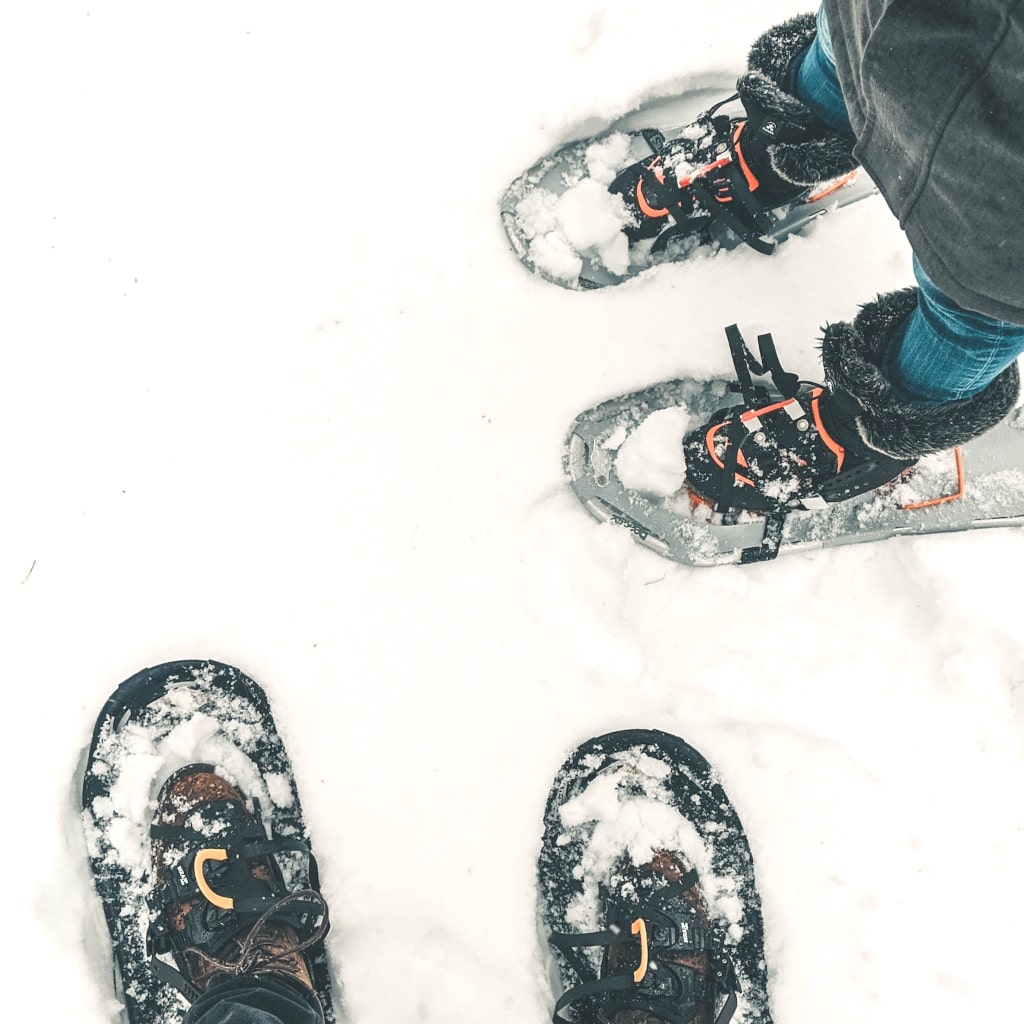
15 Best Places To Go Snowshoeing in North America This Winter


Stay Hungry for Adventure
Sign Up for Delicious Outdoor Meals & Exclusive Offers!


Join the adventure
©2024 Mountain House — All Rights Reserved.
Your Cart is Empty
Continue ShoppingYour Cart
Subtotal
$0.00
EXPRESS PAYMENT METHODS AVAILABLE IN CHECKOUT
Taxes and Shipping Calculated at Checkout












